Following seven joint angle changes corresponding to all these degrees of freedom were obtained throughout the throwing motion. <> Your gastrocnemius and soleus muscles, collectively called your calf, contract to extend your ankle in a movement called plantar flexion, while the muscles on the front of your tibia -- tibialis anterior -- contracts to hold your ankle rigid. The Biceps Brachii and supraspinatus are shown to be initiated or excited by these mechanoreceptors and assist with the prevention of anterior instability. Youth football injuries. (1996). The picture below depicts an overhead view of the alignment of the body during the acceleration phase of throwing. There are three planes of movement: Sagittal plane - a vertical plane that divides the body into left and right sides. The wrist is in neutral and the elbow is elevated to about shoulder height and is 90 flexed. During these simple movements consider the muscles proximally to distally. Our results indicate that the majority of ground reaction force production required for an optimal quarterback throwing motion comes from the rear leg, and the magnitudes may reach three times bodyweight forces. MeSH Name and discuss anatomical and mechanical factors that apply to representative throwing, kicking, or striking activities. Ball times were determined from video analysis as the time from the initial body movement to the time-point of the ball release. Bones and Joints Kicking a football uses all of the bones and joints in your lower body. Based in Harker Heights, Texas, Timothy Onkst has been writing about sports, fitness and health since 2003. During the cocking phase, Fleisig[10] reports a 3.0N increase in anterior force at the shoulder for every extra cm and a 2.1N increase in anterior force at the shoulder with every degree increase of foot angle. 2023 Jan 5;10:1046456. doi: 10.3389/fpubh.2022.1046456. There are two phases to striking a ball with a racket, the preparatory phase and the striking phase. Simulation studies suggest the importance of ball mass, ball speed and player mass in affecting the severity of impact. Please enable it to take advantage of the complete set of features! For optimal performance, a player must aim to develop a more fluid kinetic chain to maximize the power and accuracy of the shot. During this phase, the muscle activity is quite low and for these reasons risk of injury is low as well [3]. 4 0 obj In book: Science and Football V (pp.92-98) Chapter: A biomechanical analysis of the soccer. Biomechanics of pitching with emphasis upon shoulder kinematics. Goalkeeper landing with the ball hitting the ground first. When kicking the ball then: If you quote information from this page in your work, then the reference for this page is: agonists, antagonists, synergists & fixators, Gluteal muscles (gluteus maximus and gluteus minimus) and Hamstrings (biceps femoris, semimembranosus, semitendinosus), Quadriceps group of muscles (rectus femoris, vastus medialis, vastus lateralis and vastus intermedialis), Hamstrings (biceps femoris, semimembranosus, semitendinosus), Gluteal muscles (gluteus maximus and gluteus minimus), A description of the actual actions which occur at the joints involved, The plane(s) in which the movement occurs, The type of contraction (isotonic - concentric or eccentric, isometric), The range of the muscle action (inner, middle, outer). Note: The javelin is incorrectly held. Throwing is also considered one of the fastest human motions performed, and maximum humeral internal rotation velocity reaches about 7000 to 7500/second[2]. R[ :`YS%? Kraemer, W.J. The large muscles of the legs and lower body, such as the calves, quadriceps, hamstrings and glutes, all help to drive and provide power as you step into the throw. doi: 10.7717/peerj.14082. Would you like email updates of new search results? (1997). Penalty feet positioning rule modification and laterality effect on soccer goalkeepers' diving kinematics. As an individual throws a football the angle of their elbow joint increases throughout the completion of the throw. endobj When these actions cannot be performed there is an increased likelihood of anterior instability of the glenohumeral joint [3]. Front and back leg knee angle variables represent the internal angle formed between the thigh and shank segments with the fulcrum located at the center of the knee joint (Figure 4). Markers were applied in three places on the lower legs (hip, knees, and ankle), and players were asked to kick a ball with their dominant leg towards a football goal (FIFA regulations; 2.44m high and 7.32m wide) placed 20 metres away. FX::$oa7uh_AX+`|p!^K[{wTR*lYbH9PM2x#rDf0"c]pz7"'Awm@g#r"obF!daWk4{N <>/Font<>/XObject<>/ProcSet[/PDF/Text/ImageB/ImageC/ImageI] >>/MediaBox[ 0 0 3456 2592] /Contents 4 0 R/Group<>/Tabs/S/StructParents 0>> An overhead throwing motion is broken down into four phases: loading, arm-cocking, acceleration, and follow-through. Four sequential phases of the football throw were consistently reproduced in the 20 NFL athletes whose throws were reviewed: early cocking, late cocking, acceleration, and follow-through (Fig.. Biomechanics of baseball pitching A preliminary report. stream Kicking, a fundamental motor skill usually acquired during childhood, can be . (2004). sharing sensitive information, make sure youre on a federal Footballs used in this study corresponded to the official game regulation size. One-way analysis of variance (ANOVA) with Bonferroni adjustments for the Post Hoc comparisons were used to analyze the data to determine the differences between kinetic and kinematic variables examined in this study. Fleisig, G.S., Escamilla, R.F., Andrews, J.R, Matsuo, T., Satterwhite, Y., & Barrentine S.W. The demands of modern football are steadily increasing. Int J Exerc Sci. Typically the concern in this phase is safely decelerating the forward progression of the arm. 8600 Rockville Pike Before any testing procedures were conducted, the subject signed an informed consent form. However, some of the first coaching points a young quarterback receives is to stay balanced, drive with the back foot, step into the throw and follow through. You are not required to obtain permission to reuse this article in part or whole. It should also be noted that for athletes in both sports, these forces are expressed through just a single lower limb. The results show the kinematic and kinetic variables, presented, described and interpreted above, having a statistically significant correlation 99 and significant with the success of the free kick, which reveals to us that it is clear that the analysis of the performance of the free-throw shot from the phases that compose it, demonstrates the importance of the constituent variables of each phase, all linked together to maximize the fluidity of the segmental sequence of the player throughout the shot franc. During the setup or cock phase, only the bicep and forearm muscles are at work, but as you begin to drive and throw the ball, the triceps help to push your arm through while the biceps and forearm help finish the follow-through. During the acceleration phase, secondary to the excessive elbow extension peak velocity, olecranon can impinge against the medial aspect of the trochlear groove and fossa which may form posteromedial osteophyte and loose bodies formation leading to valgus extension overload syndrome. Biomechanics of the elbow in the throwing athlete. The shoulder is a ball and socket joint formed between the humerus and the scapula. Effect of core training on skill-related physical fitness performance among soccer players: A systematic review. Brunnstrom's clinical kinesiology. During this phase, a varus torque of about 64 N-m is generated at the elbow and about 67 N-m internal rotation torque is generated at the shoulder. google_ad_slot = "6157411064"; Numerical models have been used by researchers to gain a better understanding of football heading biomechanics and methods for reducing head impact response. People also read lists articles that other readers of this article have read. Descriptive statistics and standard deviations (xSD) were calculated for each of the dependent variables. 2 0 obj This analysis reviews the kinesiology of a quarterback's throwing motion specifically. Women's opportunities for competitive physical activity were limited in America until Federal Legislation, commonly referred to as Title IX, became law. If you believe that this Physiopedia article is the primary source for the information you are refering to, you can use the button below to access a related citation statement. //-->. Disclaimer. These muscles are called your quadriceps, which are made up of group of four individual muscles -- the vastus lateralis, rectus femoris, vastus medialis and vastus intermedius -- that share a common insertion point at the top of your tibia just below your patella, or kneecap. Analysis of some biomechanical variables . : 44th Congress of the Socit de Biomcanique, https://doi.org/10.1080/10255842.2020.1714936. The kinesiological analysis of the normal throw (figure1), of the throw from frontal position, of the throw without the involvement of the contralateral upper limb and of the baseball pitch. eCollection 2022. Our findings differ from ground reaction forces observed within a cohort of collegiate and high-school baseball pitchers where the greatest levels of vertical forces were observed for the stride limb (front leg) with magnitudes approximately double the bodyweight forces (5). This action, called knee extension, is the result of the contraction of the muscles on the front of your thigh. Kelly, B.T., Barnes, R.P., Powell, J.W., & Warren, R.F. Peak right (rear) and left (front) leg forces were determined as the highest point on the ground reaction force curve during the concentric phase of the throwing motion. Mean values and standard deviations (xSD) for each of the dependent variables examined in this study are presented in Tables 1 and 2. Direct free kick test and data collection. Top Contributors - Vinit Kothekar, Vidya Acharya, Kim Jackson, Olajumoke Ogunleye, Wanda van Niekerk, Rachael Lowe, Naomi O'Reilly, WikiSysop and Claire Knott. Biceps brachii presents with peak activity during flexion of the elbow in the late cocking phase as it limits anterior translation and compression forces of the humeral head. Excessive valgus strain at the elbow during the late cocking phase can lead to medial elbow injuries such as muscle tear, avulsion fractures, ulnar nerve damage and most commonly UCL strain or tear. google_ad_client = "pub-6580312449935063"; A rapid shoulder internal rotation takes place and shoulder moves from point of 175, Acceleration phase is the most explosive phase of the pitching, and trunk achieves its greatest rotation speed which leads to peak activity of obliques, Strong activity of serratus anterior and pectoralis major continues into acceleration as the shoulder moves into horizontal forward flexion and scapula protracts, Latissimus dorsi becomes active during the late cocking phase as the arm reaches maximum external rotation and continues to contribute towards humeral internal rotation during acceleration phase, Subscapularis at its greatest activity as it vigorously moves the arm into internal rotation during this phase. Having a basic understanding of the kinetic and kinematic characteristics of the most utilized quarterback throwing approaches may help athletic trainers and strength and conditioning professionals enhance on-field performance and minimize risk of non-contact injuries. Tight hamstrings may hamper your kicking ability. The .gov means its official. The hip's bones are the femur and pelvic girdle, which form a ball and socket joint. No difference was observed for ball speed, non-throw arm elbow angle, front leg knee angle, and back leg knee angle between any of the examined throwing approaches (p>0.05). These muscles, collectively called stabilizers, include your rectus abdominus or abdominal muscles, your erector spinae muscles or back muscles, your gluteal muscles in your butt. Infraspinatus and teres minor have their peak activity to externally rotate the arm concentrically and later on their activity is decreased to moderate levels during the acceleration phase. The knee bones involved are the femur and tibia, which form a hinge joint. Teres minor presents with its peak activity during this phase as it resists anterior humeral head translation, horizontal adduction and internal rotation. The knee bones involved are the femur and tibia, which form a hinge joint. The elbow undergoes a rebound effect and is approximately flexed to 45. This review considers the biomechanical factors that are relevant to success in the game of soccer. Vi& a`M\l3uW/[u+&WM6DrOQ%+ 5wR1T^!guV_ Copyright 2023 Leaf Group Ltd. / Leaf Group Media, All Rights Reserved. As the wrist extension reaches a maximum, the wrist extensor is at its greatest activity. Biceps brachii and brachialis produces marked eccentric contraction to decelerate the elbow extension and forearm pronation. The majority of ground reaction force production required for an optimal quarterback throwing motion comes from the rear leg, and the magnitudes may reach three times bodyweight forces. The soccer season: performance variations and evolutionary trends. The American journal of sports medicine. While the contribution of the lower body to the proper execution of a football throwing motion is undisputed, Fleisig and colleagues indicated that a considerable amount of force production results from elbow and shoulder joint flexion (2). By closing this message, you are consenting to our use of cookies. Standing still and throw (SST), one-step right left (1SRL), one-step left right (1SLR), three-step straight ahead (3SSA), three-step shot gun (3SSG), five-step throw (5ST). Swinging your femur forward from your hip is a movement called hip flexion. }?,BUxa3Q}Zkv)5y=kJOL]xMf7o?/4(&Z u+Y[oY5Qmi;hL]wP_D&|zZnli]O|q:?upmx3Y&oj\9ljp5WD[W2JUVLEH t=AA~06/6uvV[M&p( ZLR`\J5*vQVt(:-u[/V,QOT=4LA?31VeW'5bPr!Hcgz:k[e @zXSO$?LU.H~Tf`#TDR1Zh 2F(81$.djZ. The flight of the ball phase: the ball flight time has a statistically significant correlation of 0.781 and a contribution rate of 61% (p<0.01), the take-off angle has a correlation of 0.608 and a contribution rate of 37% (p<0.01), the ball speed has a significant correlation of 0.582 and a rate 34% (p<0.01), while (Hong etal. The momentum of ball has a significant correlation of 0.582 and a rate 34% (p<0.01), the ball kinetic energy has a significant correlation of 0.590 and a rate 35% (p<0.01). Research has shown that striking the ball at approximately a 45-degree angle is optimal. Over time the excessive utilization of the biceps brachii could lead to a superior labrum anterior to posterior (SLAP) tear. Res Sports Med. 1 0 obj % Young, W.B. Standing still and throw (SST), one-step right left (1SRL), one-step left right (1SLR), three-step straight ahead (3SSA), three-step shot gun (3SSG), five-step throw (5ST). During the wind-up phase, the energy is transferred from stride leg to pivot leg and winding up of the stride leg occurs. Bethesda, MD 20894, Web Policies While no research studies examined the influence of resistance training programs on quarterback throwing performance to our knowledge, Young et al. Considering that the quarterback throwing motion requires full-body motion involvement, we may assume that these physiological improvements would ultimately lead to throwing performance enhancement. Injuries to the shoulder are most common baseball pitching and more particularly in the late cocking and deceleration phase[15]. This is explained by the negative correlation between ball speed and accuracy. While no differences in ball throwing velocities were detected, our findings indicate significant differences in the drop step and throwing motion times between all of the examined approaches except between 1SLR and 1SRL. Kinetics of baseball pitching with implications about injury mechanisms. All of these muscles, combined with the arm muscles, are extremely active during the throw as you prepare to release the ball. Serratus anterior and pectoralis major produce their greatest activity during the late cocking phase just before maximum external rotation. The present study aimed to develop a research methodology to investigate the biomechanical response of human subjects during . Additionally, the magnitudes for the throw arm elbow angle were significantly lower for 1SLR throwing approach when compared to SST (p<0.001), 3SSA (p=0.021), 3SSG (p=0.002), and 5ST (p=0.033), while no difference was observed when compared to 1SRL (p>0.05). This is an open access article distributed under the terms of the Creative Commons CC BY license, which permits unrestricted use, distribution, reproduction in any medium, provided the original work is properly cited. Bookshelf Example of the ground reaction force curve is presented in Figure 2. doi: 10.7717/peerj.14000. A football result is determined by the interaction of too many factors to even quantify (this is why coaches are paid big money - their job is to quantify and then optimize them!). That is usually the journal article where the information was first stated. https://www.youtube.com/watch?v=iRPtVfEz4es. 5 Howick Place | London | SW1P 1WG. Houglum PA, Bertotti DB. The items of equipment reviewed are boots, the ball, artificial and natural turf surfaces and shin guards. Unauthorized use of these marks is strictly prohibited. Objectives: There has been growing controversy regarding long term effects of repeated low severity head impacts such as when heading a football. The kinetic chain in overhand pitching: its potential role for performance enhancement and injury prevention. Epub 2013 Aug 13. Kicking a football uses all of the bones and joints in your lower body. Using the central trend (arithmetic mean) and dispersion (standard deviation) parameters for the descriptive part, and the calculation of Bravais Pearsons correlation coefficients (r) for the analytical part, the calculations were performed by the IBM SPSS statistics 20 software analysis utility. Improper stabilization of the scapula may be the cause of the increased risk of shoulder impingement in this phase. Cocking - Anterior subluxation, internal impingement, glenoid labrum lesions, subacromial impingement. Due to the high forces generated in this phase, the posterior muscles are highly susceptible to tensile overload, undersurface cuff tears, labrum and bicep pathologies, capsule injuries, and internal impingement [3]. {u7~g]NHzyI~hnhy%hqLT08ps2!ln].;S`K2y@?87% EoUvxoGhXJYj :T2{D(W6mFq%m Association of lower limb injury with boot cleat design and playing surface in elite soccer. A successful kick requires good eye-foot coordination, balance, accuracy, skill and power. It is an important phase which is responsible for imparting the velocity which is driven to the point of ball release. Thus, the purpose of this case study was to analyze kinetic and kinematic components for six of the most commonly used quarterback drop throwing patterns, and to provide coaches and strength and conditioning professionals with essential information to help optimize resistance training program development which can ultimately lead to improvements in in-game quarterback throwing performance. The biomechanics of kicking in soccer: a review. InBiomechanics IV 1974 (pp. The lower body and the core muscles are often forgotten in the football throw. Sports performance series: throwing the football. x}[6#QhFz/2EfF(Ts"T]E`"2$fiV|9{(gwoao)fLq~77UWbyV~yQ%=6 /KVjxQ4UE^3!r.gW2)pC_@J!Y66? Careers. Citation2017) estimates that the balls initial velocity = 20.4m.s1 so that the ball travels along its flight trajectory during the free kick shot in a minimum amount of time. 6 Hip Extension Exercises to Tighten and Lift Your Glutes, Sports Injury Bulletin: Biomechanics of Soccer. Throw arm elbow angle was greater for SST when compared to all other throwing approaches. In contrast, several other skills, such as throwing-in and goalkeeping, have received little attention; some, for example passing and trapping the ball, tackling, falling behaviour, jumping, running, sprinting, starting, stopping and changing direction, have not been the subject of any detailed biomechanical investigation. Deceleration - Labral tears at the attachment of long head of biceps, subluxation of the long head of biceps by tearing off a transverse ligament, lesions of the rotator cuff. Each of these joints produces two actions, one when the leg is in contact with the ground (driving phase) and one when the leg is not in contact with the ground (recovery phase). You need lower-body strength in order to kick a football. The phases of an overhead throw consist of a: Each phase will illustrate the definition, injury occurrence rate, and lastly pathological possibilities. 2011 Jul-Sep;19(3):186-201. doi: 10.1080/15438627.2011.582823. Biomechanical modelling techniques have helped in the understanding of the underlying mechanisms of performance, although their use has been limited. The purpose of this study was to analyze kinetic and kinematic components for six of the most commonly used quarterback drop throwing patterns and determine how further performance improvements can be made. Available from: I give my consent to Physiopedia to be in touch with me via email using the information I have provided in this form for the purpose of news, updates and marketing. <> So, because of the increased anterior force on the shoulder, it can be assumed that over time the anterior ligamentous structures to the glenohumeral joint may be compromised. 7(z@o"EDZl,FKMT k"l)6tR(F )IEf DN5cF BG5EjY>HhP?< W/o ~{*_^ypX?H!SsW%HWMP##^o5_Z=Pf r+~=&#;3e@~hUCE@dR{+ Zw?tr%]#_ &CD:O#WJ5)fL|G?l0-^1:b">-VCXCZWpQ} 3lP'AAA9WLr1jfrRak)tV+d1`MtH.D/,' *Y#QVa1Yq *'qMDH@+)gXrD&T^G7LW\1zjC`6~xH_BSox 3wr Citation2012) claim that the average ball speed during direct goal kick is 28.3m.s1 for a floating ball shot, the speed is 25.8m.s1 (De Luca etal. Kinematic data was captured with high definition cameras (Canon SX530 PowerShot and Casio Exilim EX-ZR100) sampling at 30 Hz and analyzed with Kinovea Version 0.8.24 video analysis software. L@%ZPF?OgQAAmQ-N&70w.*R~Xmu?lA|{QL87v)yq:XZvnp ]C;ha'NHv6dw[>ko 2dlbheyka FmVO@;JRV_PR8a1$|8SJ"0TM%\znvoQwc^E=`AN[^ac0ug} F~~pKV7!'wW:b!i9$p K42_X7mTF2o. AlTaweel A, Nuhmani S, Ahsan M, Abualait T, Muaidi Q. PeerJ. Hip extensors and abductors, knee flexors and ankle plantar flexors of the pivot leg work to propel the weight forward as the stride leg is moving forward. Zack Greinke Pitching Mechanics Slow Motion Baseball Instruction Analysis LA Dodgers MLB 1000 FPS. Little of the research conducted by equipment manufacturers is in the public domain; this part of the review therefore concentrates on the mechanical responses of equipment, player-equipment interaction, and the effects of equipment on player performance and protection. In a study of pitchers with chronic anterior instability, stimulation of mechanoreceptors within the glenohumeral joint excited and/or inhibited certain muscles. For each throwing approach, all the devices recorded the data simultaneously. Baseball pitching demonstrated a greater and earlier occurrence of upper torso rotation, elbow extension, and shoulder internal rotation when compared to a standard quarterback throwing motion (3). These muscles are all around the shoulder joint, with the deltoids being two of the larger shoulder muscles and the supraspinatus and infraspinatus being part of the rotator cuff muscles that help you rotate your arm to finish the throw. Fleisig and colleagues ( 17) have published one description of the phases of the football throw, but their description of the throwing motion used the same six phases that had been previously defined for baseball pitching with no regard for mechanical adjustments associated with the heavier ball. endobj The influence of soccer shoe design on player performance and injuries. His articles have appeared in a variety of publications including "Texas Roundball" magazine, Yahoo Sports, Fox Sports and other websites. Heading the ball could lead to long-term brain damage. Efforts to limit women's sport activity continued as they became more involved in competitive sports. Register to receive personalised research and resources by email. When looking at analyzing a goalkeeper dive, one important technique which can be used would be using motion analysis. Players adapt to surface types over a period of several games. One-way analysis of variance was used to determine the differences between the six throwing approaches for the kinetic and kinematic variables examined in this study. 2010 Jun;28(8):805-17. doi: 10.1080/02640414.2010.481305. The phase of wind-up begins with the initiation of the stride leg and ends when the ball separates from the glove and the stride leg reaches the highest point, The ipsilateral leg and trunk rotate approximately 90 and the contralateral hip and knee flex, During the wind-up phase, the energy is transferred from stride leg to pivot leg and winding up of the stride leg occurs. The ball was placed 20 meters in front of the goal. In the early cocking phase, the supraspinatus and deltoid work together to abduct the arm with a peak activity, The other muscles which produce peak activity during early cocking phase are right extensor carpi radialis longus and brevis, extensor digitorum communis, right gluteus maximus and left oblique for right-handed pitcher. 2012 ), foot contact with the ball, and follow-up (Barfield 1998 ), the kicking procedure can also be divided into five essential However, the fundamental analysis of motion can be done visually and should involve the following: The running leg action occurs in a sagittal plane about a frontal axis and involves the hip, knee and ankle joints. Gowan ID, Jobe FW, Tibone JE, Perry J, Moynes DR. Fleisig GS, Andrews JR, Dillman CJ, Escamilla RF. It occurs from the point of ball release to maximal humeral internal rotation and elbow extension. EMG studies show that the upper trapezius has a maximum voluntary isometric contraction (MVIC) of 18%, serratus anterior 20%, and anterior deltoid 15%. .KO'Bu~dn"x=>l7B@ktTmx`6j>bR * Kinematics deals with the position, velocity, and acceleration of a moving object. Some soccer injuries may be attributable to the equipment used. endobj The direct free kick is an integral part of football and is considered a crucial skill, especially for those who attempt to score goals, such as strikers and other attackers (Bray and Kerwin, Citation2003). The placement phase of the support leg and swaying footstrike: the thigh speed has a significant correlation of 0.350 with a rate of 12% (p<0.01), the leg speed has a correlation of 0.424 and a rate of 18% (p<0.01), the foot speed has a significant correlation of 0.488 and a rate of 24% (p<0.01), while the study of (Shinkai etal.
Lululemon Swiftly Tech Size Chart,
Mobile Homes For Rent In Gaston, Sc,
Gampanin Ng Lgbt Sa Lipunan,
Articles A





